

The dyeing and printing of textile products need to be done in a certain way to remove impurities and oil stains on the cloth surface. This cooking process is often called scouring. And in the refining of various types of infiltration, emulsification, washing, dispersing, wetting function of chemical auxiliaries, called scouring agent.
During the refining process, the scouring agent is through its wetting effect, the weakened adhesion of the oil wax and the fiber in the fabric, and the gradually reduced interface, to make the oil wax fall off the fabric. At this time, the oil wax particles and water contact surface increased, forming a very unstable system, the surfactant in scouring agent has emulsifying and dispersing effect, which is easy to form micelles in water, and the oil wax wrapped in the micelle to form a comparatively stable system, which can prevent the oil grains from being deposited on the fabric. On the other hand, with the help of the wetting effect of surfactants, in a certain temperature and sufficient time conditions, the caustic soda and fiber impurities fully effect the decomposition, and the decomposition of its solution or the use of surfactants dispersed in scouring fluid, by washing and removal.
In a broad sense, the addition of acid, alkali, oxidant, reducing agent and all kinds of surfactants can be called scouring agent in scouring process. But in the textile industry, generally speaking of scouring agent in textile, mostly the concept of narrow sense, mainly refers to all kinds of anion, non-ionic surfactants and appropriate additives, through a certain proportion of the method to get a washing effect, and with infiltration, emulsification, dispersion, complexion and other synergistic effects of the complex. Because the scouring of fabrics is a very complex physical and chemical process, in the surface chemistry scouring agent emulsification, dispersion, and chelate metal ions ability are very important properties, and these properties alone in some surfactants is difficult to complete. All kinds of surfactants have their own advantages and disadvantages, thus the scouring agent is often composed of a number of different types of surfactants. The current scouring agent in the market is generally composed of nonionic and anionic surfactants.
Scouring process is that the desizing of cotton cloth boiling in a certain concentration of caustic soda solution for several hours, or soaking up in the alkali steam for a certain time, which make the fat wax in cotton fiber saponification, emulsification, pectin for pectin salt; the cotton seed shell easy to wash away; and the residual slurry further expanded and removed. Synthetic fibers do not contain natural impurities, generally in no need of scouring. However, in the cotton blended fabric, the cotton fiber contains more impurities, scouring is still required.
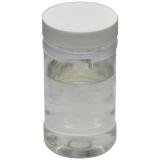 Scouring Agent of Cotton Fabric
[Brief information]--It is widely used in textile processing. It has good emulsification, dispersion, penetration ability, can remove all kinds of dirt fabric, grease substance, floating color.[Main c...
view
Scouring Agent of Cotton Fabric
[Brief information]--It is widely used in textile processing. It has good emulsification, dispersion, penetration ability, can remove all kinds of dirt fabric, grease substance, floating color.[Main c...
view
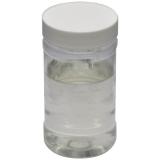 Low Temperature Scouring Agent in Textile HT-DJ133
[Main composition]-- Surfactant compound.[General properties]-- Appearance: colorless to pale liquid-- Ionicity: nonionic--pH: 3-5(1% solution)--Solubility: easily soluble in water--Stability: stable...
view
Low Temperature Scouring Agent in Textile HT-DJ133
[Main composition]-- Surfactant compound.[General properties]-- Appearance: colorless to pale liquid-- Ionicity: nonionic--pH: 3-5(1% solution)--Solubility: easily soluble in water--Stability: stable...
view
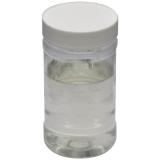 Scouring Agent
Scouring gent confers good whiteness, capillary effect and soft hand feels to the fabrics.
view
Scouring Agent
Scouring gent confers good whiteness, capillary effect and soft hand feels to the fabrics.
view
 The Test of Capillary Effect of Scouring Agent
1. Common methodsCorrect the horizontal position of capillary effect tester, adjust acaleplate and makes, its zero points exactly in one level with the water level. And then take 2 samples with 30cm i...
view
The Test of Capillary Effect of Scouring Agent
1. Common methodsCorrect the horizontal position of capillary effect tester, adjust acaleplate and makes, its zero points exactly in one level with the water level. And then take 2 samples with 30cm i...
view
 Testing of the Properties of Scouring Agent - Determination of Residual Fat Content
Determination of residual fat content1. Instrument and Scouring Agent. Oil Soxhlet extractor and carbon tetrachloride.2. Operation steps. Firstly, to put oil flask of the Soxhlet extractor and 10g sam...
view
Testing of the Properties of Scouring Agent - Determination of Residual Fat Content
Determination of residual fat content1. Instrument and Scouring Agent. Oil Soxhlet extractor and carbon tetrachloride.2. Operation steps. Firstly, to put oil flask of the Soxhlet extractor and 10g sam...
view
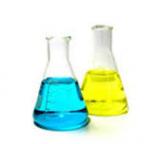 Determination of Properties of Scouring Agent - Determination of Hair Effect
1. The common method. To correct the check meter of capillary effect into the horizontal position and adjust the scale, making the scale of the zero point exactly with the water level. And then take t...
view
Determination of Properties of Scouring Agent - Determination of Hair Effect
1. The common method. To correct the check meter of capillary effect into the horizontal position and adjust the scale, making the scale of the zero point exactly with the water level. And then take t...
view
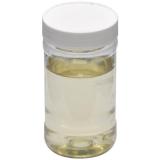 The Test of the Properties of Scouring Agent Determination of textile's Whiteness
There are so many testing methods of whiteness, and the reliability and applicable range are varied, especially as the increasing use of the fluorescent whitening agent in recent years, making the det...
view
The Test of the Properties of Scouring Agent Determination of textile's Whiteness
There are so many testing methods of whiteness, and the reliability and applicable range are varied, especially as the increasing use of the fluorescent whitening agent in recent years, making the det...
view